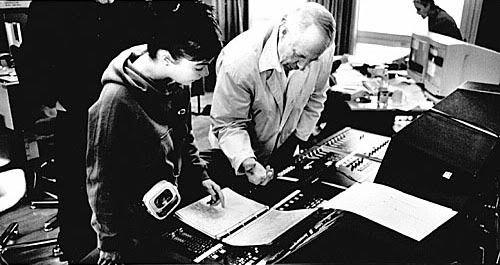Concepts: ‘keep them guessing’ (Scientist, quoted by Veal 79); ‘a dub mix works upon a listener’s desire for completion, a desire based on their memory of a preexisting song’ (Veal 79); ‘a dynamic of surprise and delayed gratification. The engineer continuously tantalizes the listener with glimpses of what they are familiar with, only to keep them out of reach, out of completion’ (Veal 78).
Audio: ‘New Dawn’ (8:15, Beat Pharmacy)
Allusions, comparisons: ‘Watergate Rock’ (2:50, King Tubby, 1974*); ‘Psalms of Dub’ (3:00, King Tubby, 1974*) *According to xraymusic.co.uk.
Playback architecture: I call it Desk-A-Phonic™ and it consists of a small 4’ wide desk, simple squared arc of wood with no frills, and inside the leg space on the carpet are two robust computer speakers in the far-most corners (good bass, ‘dem). Playing dub vibrates the desk, vibrates my hands on the mouse, and gives me the hint of a dub party – even if my puny bass-a-rockin’ is merely functioning as an audio symbol (nevertheless it reminds me of the dub context).
Beat Pharmacy’s ‘New Dawn’ flirts with the listener for 1:11 until the anticipated beat, a house beat, drops into the sound image; for that minute or so, the dubby guitar licks and bass harmony, and echo effects, are all calling out to us, it seems – or else they call out to the missing beat. At 1:11 the anticipated beat pummels the listener.
At 1:53 the beat forgets itself again in a dub oblivion until 2:23 (30 seconds). 2:55 – 3:02, another break-down. And at 4:00 a break. 4:32, a break which really gets down to bear bones. At around 4:50 the beat disintegrates noticeably before the break. In the fifth minute we hear effects, and more echo washing out and slapping around the beat, and a prominent bass harmony which is rather low and dark. The middle is the densest sound image. From about 6:40 to the end at 8:15, there is no beat.
The dub production strategy, if not theme, of sonic differance, if we may apply this Derridean term to the dub ‘surprise’, and to dub’s deferring the satisfaction of hearing resolutions to one’s aural expectations (namely, the bass line, beat, or vocals), has figured into house music albeit in a distilled and formalized way.
Dance musics like house (which grew largely out of club settings, and underground) have the dub differance usually toward the middle, where the track’s layers decompose, often revealing a spacious inner chamber, if you will. The dancers are enticed into this space (or must earn it by dancing), and after the break-down there is a moment to dub-out, a mini-oblivion, a clearing of the aural slate. When the party is hovering in that place of differance, perhaps not even dancing anymore, but simply swaying and tripping out, there is a level of expectation that arises about when and how the beat will flood the floor again.
Classic dubplates like ‘Watergate Rock’ (2:50, King Tubby, 1974) or ‘Psalms of Dub’ (3:00, King Tubby, 1974) – I have a theory that these two tracks are using the same riddim, but inversed – are not only using differance within the song’s own elements, but also playing with the listener’s expectations toward completing sound pictures from shards of previous songs. With dub differance the anticipatory climate is upheld or is completely freestyle throughout.
The Beat Pharmacy song complicates the expectation for the familiar house track’s middle break-down into oblivion. It does not occur. In keeping with the track’s dub inflections, ‘New Dawn’ instead goes the route of continuous differance melded with the stylings of house, and in this way it achieves a sonorous fusion whilst indicating the genetic ties between house and dub.










